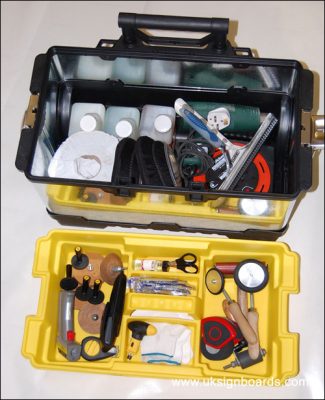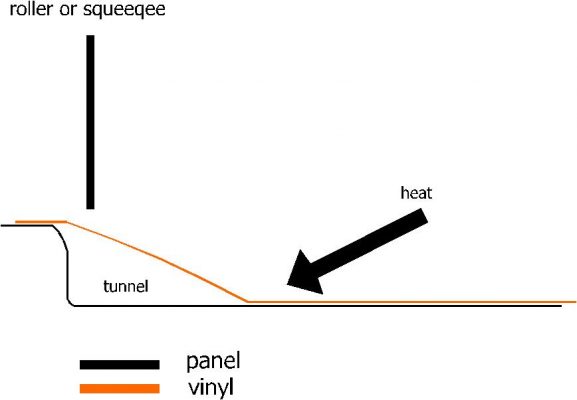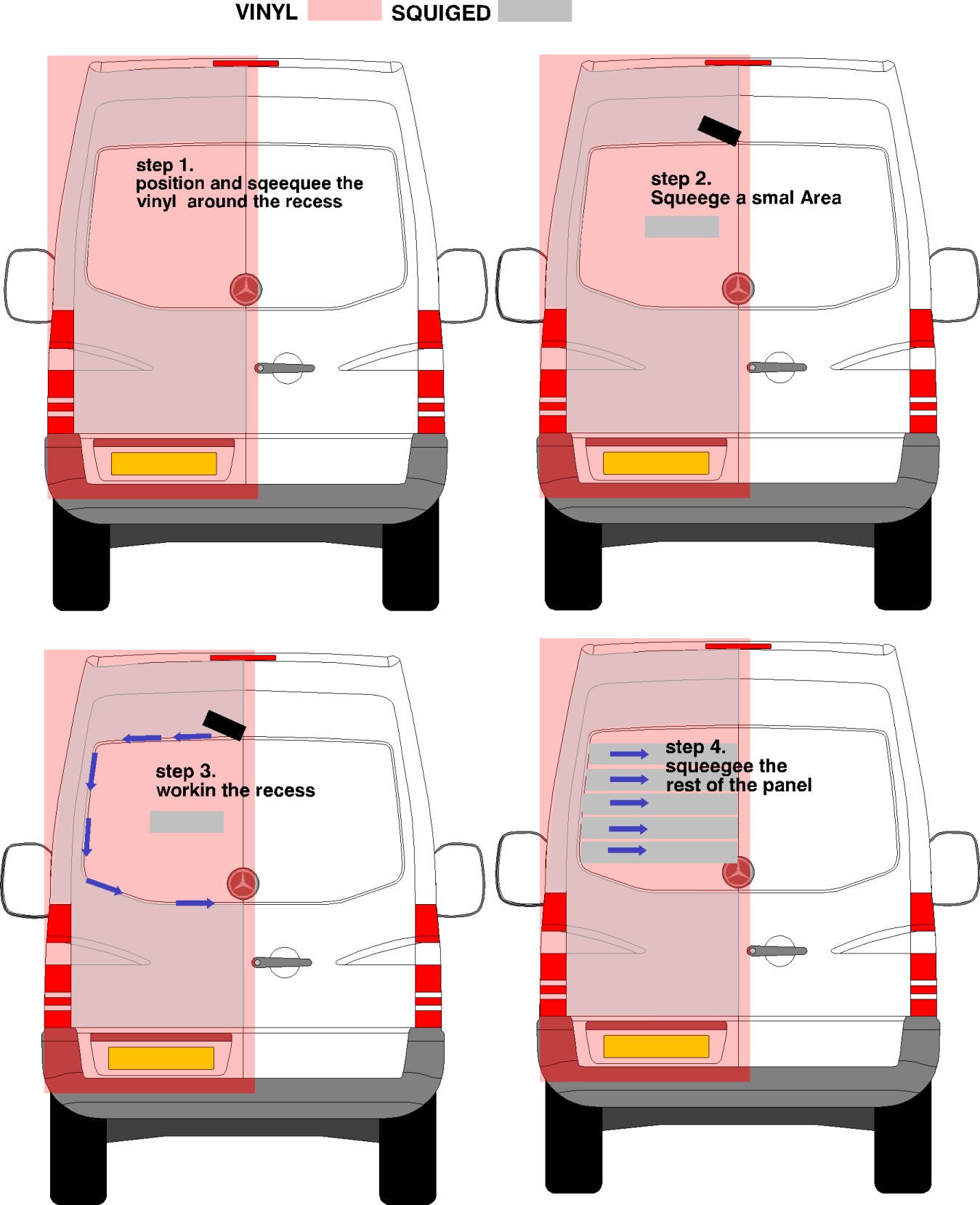Activity Feed › Forums › Sign Making Discussions › Vehicle Wrapping › Avery Supreme wrapping film
-
Avery Supreme wrapping film
Posted by Matty Goodwin on September 25, 2010 at 8:08 pmHi,
We’ve got a huge contract wrapping Sprinters in this material.
I know a few guys on here are on the contract so your views don’t count! Has anyone else used it?
All thoughts are welcome.
MattBenno replied 13 years, 10 months ago 10 Members · 19 Replies -
19 Replies
-
out of interest why don’t the other views count.
for the benefit of others and me it would be nice to know please. -
Matt
what is your view?
You have been fitting for a few weeks now,
are you having problems?Peter
-
Gotto be carefull what I say here…
We had supreme then switched to 900 for a week and the results were better.
Now back on Supreme and the feeling is that the recesses wont stand the test of time!
We had Avery over to ‘teach’ us the way to fit the film, completely different to how we all wrap, and I’m sure the guys on here on the contract will agree, we have learned alot!
There is a very strict way to work this film and I think we’ve got it now. No failing just 100% quality job!
You can easily do a bonnet by yourself, side panels etc…its basically idiot proof but its all about the post heating and the application method!
Come on then Ch**s and J**n and you others….Thoughts…?
Matt
-
thanks for that Matt but what is so different, i have just read the fitting instructions, what have you been taught that is not in the sheet.
i appreciate your comments from your vast experience of fitting wraps.chris
-
Hi Chris
Hard to put into words as you can imagine but instead of getting it close to the recess you leave a ‘tunnel’ which you apply after the recesses are heated.
Great instruction from the man himself, Hans from Avery.
As I said, its hard to explain in word, but it is the way forward I think in wrapping films….
Matt
-
Matt,
When you say you leave a tunnel which is then applied after the recess is heated?
By this are you meaning you apply the deepest part of the recess, get this down and post heat and then release the air from the ‘tunnel’??
Is this method used so that the percentage stretch is greater?
I’m familiar with heating the recess first and then applying the remaining vinyl, or tunnel so that the excess vinyl absorbs the stretch as opposed to all the ‘stress’ being on the recess.
Is this what you mean or is there another method that has been learnt?
Andrew. -
Quote, Matty Goodwin:Great instruction from the man himself, Hans from Avery.
Great nickname too for a reputable vinyl fitter.
I would be interested in knowing a bit more too mate.
Like Andrew, ive seen a few different methods of applying into recessed areas over time.
some are better than others obviously but I’m always looking for ways others have bettered it. -
haven’t had a lot of experience with the supreme, but I prefer working with the 900 series most of the time.
I find the 3M wheel makes working in the recesses much easier, and since using the wheel, I’ve not had tunneling at all. Only one I’ve had problems with was with Calon’s wrap material I fitted under contract. It went really gooey (excuse the technical term) and creased when the wheel forced it into the recess. I don’t know the code for it as I saw no markings, but decided I’d not be using it myself if I had a choice.
-
Quote: Shane Drew
I find the 3M wheel makes working in the recesses much easier
What is this wheel, Shane?
-
About 2m.22s in
http://www.youtube.com/watch?v=g0MT2si36W0The wheel is part of the ij380 wrapping system and MUST be used when fitting for 3m to warranty it
Peter
-
oo ta Peter…id like to get one…anyone know where from?
-
i bought mine from spandex, but i imagine any 3m dealer should be able to get them!
-
Quote, Cheryl Smith:
oo ta Peter…id like to get one… anyone know where from?
I bought mine from Wm Smiths, great tools to have and work very well…
However, I do not use them in the same way the video shows in the severe recesses in that video.
You can see I have them in my toolbox I posted back in 2007. -
Matt’s way is the best i find.
i personally always attack the recess with a 3 to 4-inch tunnel and then chase the channel of air out of either side this way the film is being stretched from a bigger surface area therefore its less likely to fail.
assuming you also superheat it to the manufacturer’s spec.
also, i use a 3m wheel for peace of mind although it does feel like you are cutting up pizza. -
-
yes thats what i mean by a tunnel but i would use a greater distance before goin into the recess which will then obviously leave you with a channel of air which u can then push out. the trick is to make the bridged area torte but not to tight like a drlumskin. this also eliminates multiple tidal lines which occur from heating in bit by bit hope this helps
danny
-
Danny, the drawing is not to scale, but I thought this was the "normal" way of doing receses, so I was wondering how Han’s version differs, as describe by Mat?
still not sure what you mean by a channel of air to push out, and where you would push it to?
could you do a simple drawing to explain?
Mat’s in a tent during the week, so I look forward to hearing his version of a tunnel come the weekend.Peter
-
Mat has explained the method that Hans uses, and asked me to post to explain it,
because he is on site, with limited net access.
I think from what he says it works as the diagram.
because the Avery supreme does not grab anything like normal vinyl, there is no need to apply the vinyl in the panel first, but rather do the recess first, in effect feeding the vinyl in rather that stretching it. then it is possible to do the rest pf the panel and remove any bubbles easily, because of the nature of the material.
post heat is then applied according to the specs.This works because the panel has an "open side", and on the side panels its the same, either because of the sliding door, or the join in the panel. I am not sure how this would work on a "closed panel, or a double recess, like on the ldv van?
Hope this helps.
If my explanation is incorrect Matty. please let me knowPeter
-
Peter,
thanks for the explanation of the technique.
I was one of the first to use this vinyl (came direct of the factory, last year) and I have to say that this is the way I have used this material for the last year and didn’t encounter any problems with popping out.I thought that most of you guys would apply it in this way. We haven’t had any special courses for this type of vinyls, but for us it was clear from the beginning that you have to spread the tension in the material as much as possible. As you said, because it’s not tacky and the air release, you have no problem with bubbles or trapped air.
Log in to reply.




